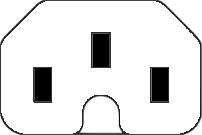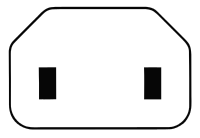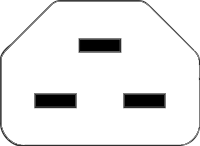IEC 60320 Reference Information
Definition
IEC 60320 Appliance couplers for household and similar general purposes is a set of standards from the International Electrotechnical Commission (IEC) specifying non-locking appliance and interconnection couplers for connecting power supply cords to electrical appliances up to 250 volts.
Each Plug, Connector, Inlet is unique and can only be mated with a component with comparable voltage and amperage ratings. One consistent distinction between the names of each, is the male is an even number and the female is an odd number. The amperage rating for the plug/connector is more of an available range, when determining the amperage rating of a cord set it is best to view the wire gauge of the cordage connecting the two ends.
In this guide, the table is designed to help you quickly determine some useful facts based on the pin orientation or name as well as available power cord and adapter options available. If you wish to learn more or see detailed pictues to reference, either scroll down to browse each kind or click on the view more link to quickly navigate to the specific section of the document that talks about that standard.
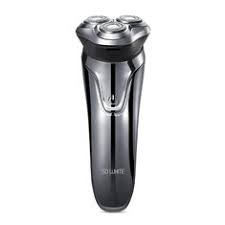
IEC C2 Application : Electrical Razor
The IEC 60320 C2 Inlet is rarely used, but it is most commonly know for its application on small electric razors. The increasing popularity of cordless razors and rechargeable razors utilizing power adapters is making the use of the IEC 60320 C1/C2 lesser by the day.

IEC 60320 C2 Inlet
The IEC 60320 C2 is an ungrounded Inlet rated up to 250V and 2.5 Amps Internationally or 125V and 10 Amps in North America. The C2 Inlet mates with a C1 connector, and is commonly used for powering small electronics like razors. This is Inlet is rarely used today, and has been generally replaced by the IEC C8 Inlet. The pin layout is nearly identical to the C8, and can commonly be confused for it. The best way to distinguish between the two inlets is the shape of the cavity around the pins. The C2 will have an oval shape, while the cavity for a C8 Inlet will look like a double barrel shotgun.
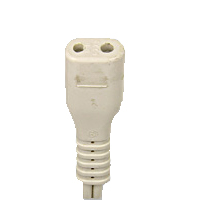
IEC 60320 C1 Connector (Female)
The IEC 60320 C1 is a non grounded 2 Wire connector rated up to 250V and 2.5 Amps Internationally or 125V and 10 Amps in North America. The C1 mates with a C2 inlet, and is commonly used for powering small electronics like razors. The plug looks identical to the C7 Connector with the exception a round, oval edge on the C2 and a "Shotgun" Figure 8 style of the C8.

C3 & C4 : Withdrawn from IEC 60320 Standard
The IEC 60320 C3 and C4 are polarised, non grounded 2 pole plug and connectors. They are rated rated up to 250V and 2.5 Amps Internationally or 125V and 10 Amps in North America. They are similar to the C1/C2 variation except the "key" prevents this connector from being plugged in either polarity, effectively "polarizing" the device. This plug and connector standard has since been removed from the IEC 60320 Standard.
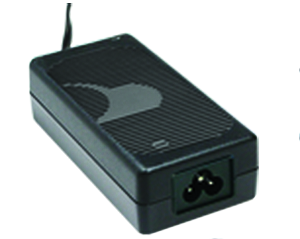
IEC C6 Application : Power Supply Transformers
The IEC 60320 C6 Inlet is commonly found on both switch-mode and standard power supplies for electronic devices like laptops, monitors and gaming devices. These connect to the C5 connector, which is commonly referred to as the 3 prong mickey mouse power cord.

IEC 60320 C6 Inlet
The IEC 60320 C6 is a grounded Inlet rated up to 250V and 2.5 Amps Internationally or 125V and 10 Amps in North America. The C6 Inlet mates with a C5 connector, and is commonly used for powering small electronics like razors. If you are asking what is IEC 60320 C6, dont worry it is one of the most easily identifiable pin layouts of power distribution. The inlet is often referred to as the 3 prong mickey mouse inlet. The C6 Inlet is commonly found on small devices power supply transformers that power devices like laptops, monitors and gaming consoles.

IEC 60320 C5 Connector (Female)
The IEC 60320 C5 is a grounded 3 Wire connector rated up to 250V and 2.5 Amps Internationally or 125V and 10 Amps in North America. The C5 mates with a C6 inlet, and is commonly used for laptop power supplies, projectors, and some televisions. Being slightly smaller in size than the C13, the C5 can be a good choice for smaller appliances. This connector is sometimes referred to as a "Mickey Mouse" connector due to the shape of the connector looking similar to the kids television show character. This is a grounded connector.

IEC C8 Application : Power Supply Transformers
The IEC 60320 C8 Inlet is commonly found on standard power supplies for electronic devices that are double insulated, due to the fact there is no grounding conductor. These connect to the C7 connector, which is commonly referred to as the figure 8 or infinity connector.

IEC 60320 C7 Connector (Female)
The IEC 60320 C7 is an ungrounded 2 Wire connector rated up to 250V and 2.5 Amps Internationally or 125V and 10 Amps in North America. The C7 mates with a C8 inlet, and is commonly used for laptop power supplies, video game consoles, televisions, and other double-insulated small appliances. This connector is sometimes referred to as a "Figure-8" or "Shotgun" connector due to it's shape. A variation of the C7 exists, sometimes referred to as a C7P or C7 Polarized, although it is not documented in the IEC 60320 standard. The C7P has one square side and one circular side so the connector only mates with the inlet using the correct pin configuration.
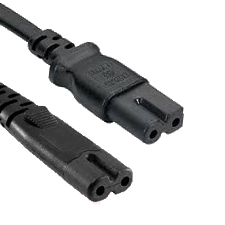
Polarized vs. Non-Polarized IEC 60320 C7
For applications where the device or power supply is polarized, or is not internally wired to be plugged into a power supply in either orientation, there is the Polarized C7. This feature prevents the connector from being plugged in either orientation. The easiest way to distinguish between the two types is the polarized version will have one side of the connector in the shape of a circle and the other will have rigid corners like a square.

IEC C10 Application : Roland TR-909 Synthesizer
Although this plug/connector variation is rarely used in new products, older hi-fi equipment commonly used the IEC 60320 C10 Inlet for power supply. Some of these examples include Roland Corporation's TR-909, Revox's A76,B77 and B225 models and Marantz hi fi equipment used in the 1980s.
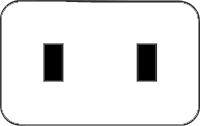
IEC 60320 C10 Inlet
The IEC 60320 C10 is an ungrounded 2 Prong Inlet rated up to 250V and 6 Amps Internationally. The C10 mates with a C9 connector and is commonly used for powering older hi-fi equipment like synthesizers and sound decks.

IEC 60320 C9 Connector (Female)
The IEC 60320 C9 is an ungrounded 2 Wire connector rated up to 250V and 6 Amps Internationally. The C9 mates with a C10 Inlet and is commonly used for powering older hi-fi equipment like synthesizers and sound decks. The C9 is similar to the C11, except that the C9 is not polarized and can be plugged in either way. The C9 is rarely used in new products.
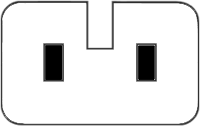
IEC C11 and C12 : Removed from the standard
The IEC 60320 C12 Inlet is a polarized version of the C10, and is rated up to 250V and 10 Amps Internationally or 250/125V and 15 Amps in North America. The C11/C12 are nearly identical to the C9/10 except there is a tab on the top of the C12 Inlet that forces polarity. This is for devices that are not internally wired to accept posotive or negative leads to be on either side. The C11/C12 have since been discontinued and are currently not on the IEC 60320 set of standards.
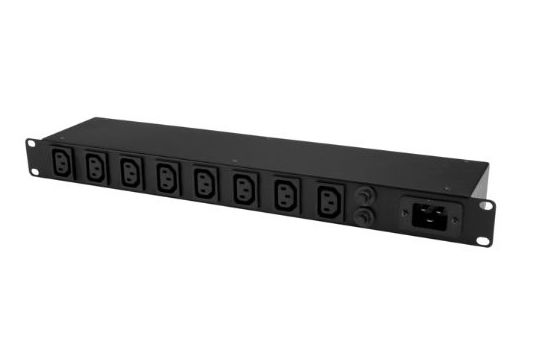
C13 Application : Outlet on a Power Distribution Unit (PDU)
The IEC 60320 receptacle our outlet is commonly found on power supply units or on Power Distribution Units like the one shown here. The C13 socket is used for powering lower power draw devices like monitors and switches.
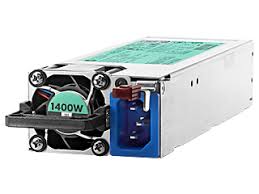
C14 Application : Inlet on a HPE Power Supply
Individual Power Supply Units(PSU) on rackmounted servers typically use a C14 inlet for power. High Availability servers will use two or three PSUs in order to provide redundant power. Most data centers color coded power codes (usually BLUE or RED) to identify primary and secondary power supplies.
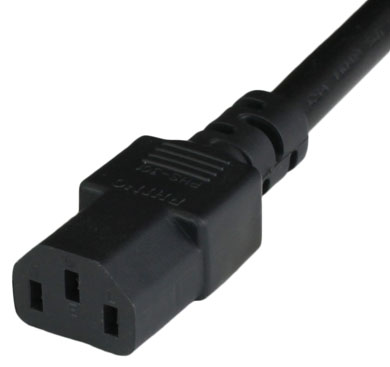
IEC 60320 C13 Connector (Female)
The IEC 60320 C13 is a grounded 3 Wire connector rated up to 250V and 15 Amps. The C13 mates with a C14 inlet, and is commonly used in a jumper cable scenario in IT Installations providing power from a PDU to a server, router, switch or other computing device. Most people know the C13 as 'the thing that plugs into my computer' because it is the standard connector used to power most desktop computers. In a desktop computer application, the most common cable is the NEMA 5-15P to C13, which connects your standard North American wall outlet to a desktop computer.
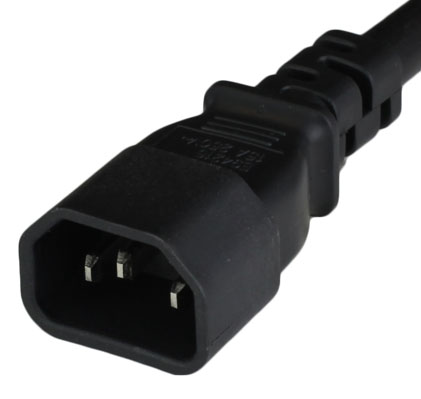
IEC 60320 C14 Plug (Male)
The IEC 60320 C14 is a grounded 3 Wire Plug rated up to 250V and 15 Amps. The C14 mates with a C13 outlet, typically found on Data Center/IT specific PDUs (Power Distribution Unit). The most common configuration for a C14 is in a jumper cable scenario, providing power from a PDU to IT Equipment.
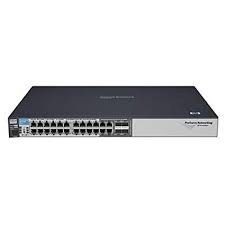
IEC C16 Application : HP Procurve Switch
The IEC 60320 C16 is a grounded Inlet rated up to 250V and 10 Amps Internationally or 125V/250V and 15 Amps in North America. This variation is designed for high temperature applications which is why it is commonly used for devices such as switches and electric kettles that reach high temperatures. The C16 is identical to the C14 except for the nob below the ground pin which is the biggest distinguisher for this variation. The C16 is rated for 120 degrees celcius vs. 70 degree celcius rating of the C14.

IEC 60320 C15 Connector (Female)
The IEC 60320 C15 is a grounded 3 Wire connector rated up to 250V & 10 Amps Internationally or 125V/250V & 15 Amps in North America. The C15 mates with a C16 inlet as well as a C14 Inlet and is commonly used in a jumper cable scenario in IT Installations providing power from a PDU to a server, router, switch or other computing device. The C15 is a HIGH TEMPERATURE connector rated up to 120°C, unlike the 70°C rating of the C13. The C15 is commonly used in in electric kettles and other household appliances that involve higher temperatures than a normal C13 is made to withstand.
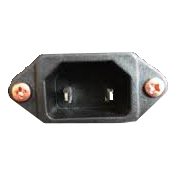
IEC C18 Application : Xbox Power Supply
The IEC 60320 C18 Inlet is an ungrounded inlet that is used on 90s electronics. Some of these include IBM wheelwriter seres typewriters and Xbox 360 Power Supply Transformers. This configuration is similar to the C13/C14 except the C17/18 has no ground pin.
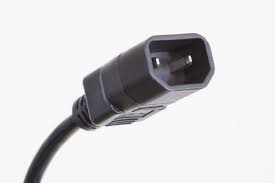
IEC 60320 C18 Plug (Male)
The IEC 60320 C18 is a non grounded 2 Wire plug rated up to 250V & 10 Amps Internationally or 125V/250V & 15 Amps in North America. The C18 mates with a C17 inlet and was commonly used with early 90s electrical power supplies. The C18 Plug is much less common than the C18 Inlet, and is usually only used for extension cord scenarios.
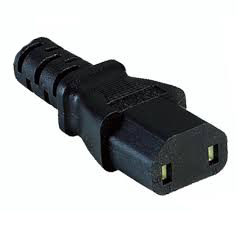
IEC 60320 C17 Connector (Female)
The IEC 60320 C17 is a non grounded 2 Wire Connector rated up to 250V and 15 Amps. The C17 is commonly used to attach a power source to a C18 inlet on a power source transformer for smaller electrical device manufacturerd in the early 1990s. The C17 is similar to the C13, without a grounding pin.
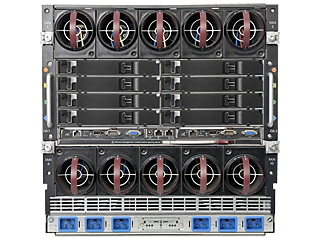
Application: 6x C19 C20 Power Cords used For HPE BladeSystem c7000 Platinum Enclosure
High Powered Blade Server Chassis such as the HPE c7000 utilize multiple C20 inlets for power due to the high power consumption of the each blade server within.

IEC 60320 C19 Connector (Female)
The IEC 60320 C19 is a grounded 3 Wire connector rated up to 250V and 20 Amps. The C19 mates with a C20 inlet, and is commonly used in a jumper cable scenario in IT Installations providing power from a PDU to a server, router, switch or other computing device. The C19 is typically used in high powered blade server chassis, large network routers, and other IT equipment that draws more power than a standard C13 can accommodate.

IEC 60320 C20 Connector (Male)
The IEC 60320 C20 is a grounded 3 Wire Plug rated up to 250V and 20 Amps. The C20 mates with a C19 outlet, typically found on Data Center/IT specific PDUs (Power Distribution Unit). The most common configuration for a C20 is in a jumper cable scenario, providing power from a PDU to a blade server chassis, high powered server, large network router, or similar device.
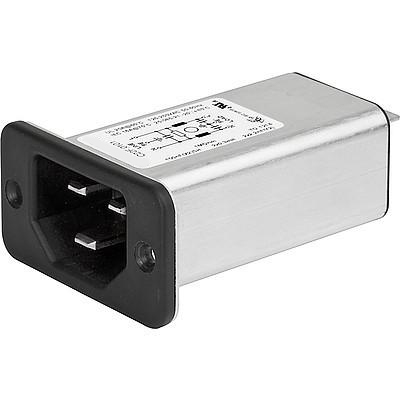
IEC C22 High Temperature Inlet
The IEC 60320 C22 is a grounded Inlet rated up to 250V and 16 Amps Internationally or 125V/250V and 20 Amps in North America. This inlet is intended for High Temperature applications like high power servers, large network routers and devices that can quickly reach temperatures exceeding 65 Degree Celcius. This inlet is rated for maximum pin temperature of 155 Degree Celcius.
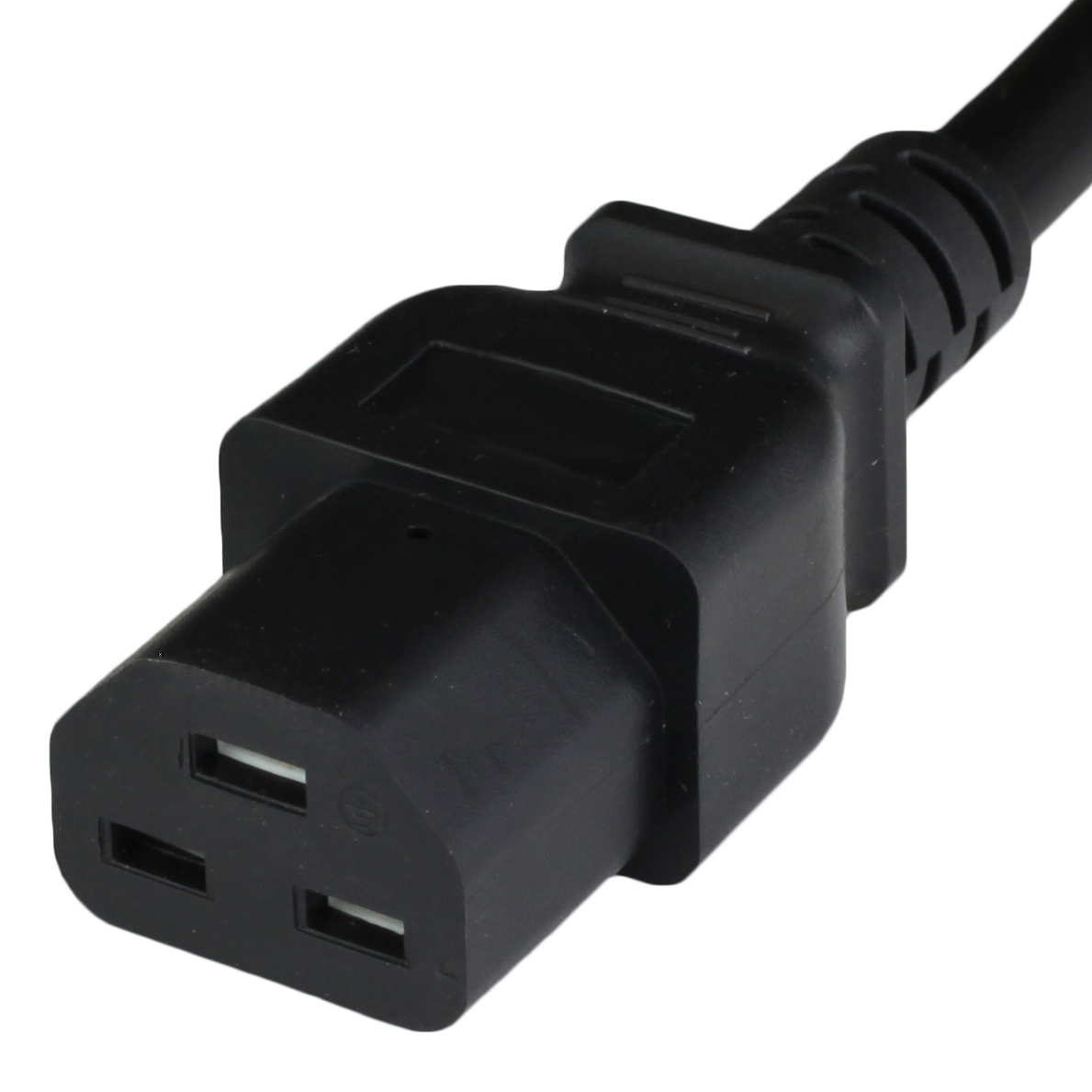
IEC 60320 C21 Connector (Female)
The IEC 60320 C21 is a grounded 3 Wire connector rated up to 250V and 20 Amps. The C21 mates with a C22 or C20 inlet, and is commonly used in a jumper cable scenario in IT Installations providing power from a PDU to a server, router, switch or other computing device. The C21 is a HIGH TEMPERATURE version of the C19 connector, with a maximum pin temperature of 155°C instead of the standard 65°C ofa C19, and is typically used in high powered blade servers, large network routers, and other IT equipment that draws more power than a standard C13 can accommodate.
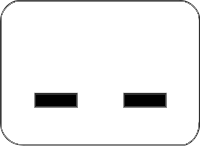
IEC C23/24: Rarely Used
The IEC 60320 C23 and C24 is similar to the C19/C20 variation without a ground pin. Due to the higher power draw of equipment with amperage exceeding 15A, it is rare for electrical devices to be powered without a ground available. This is why the C19 is much more common than this variation.




